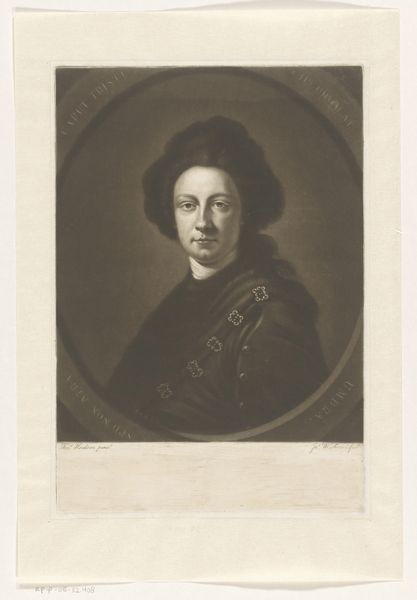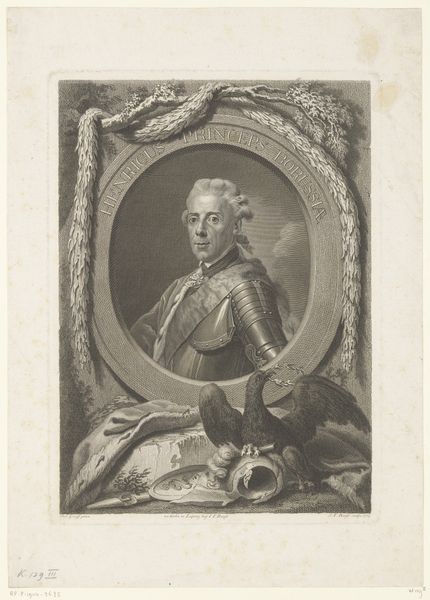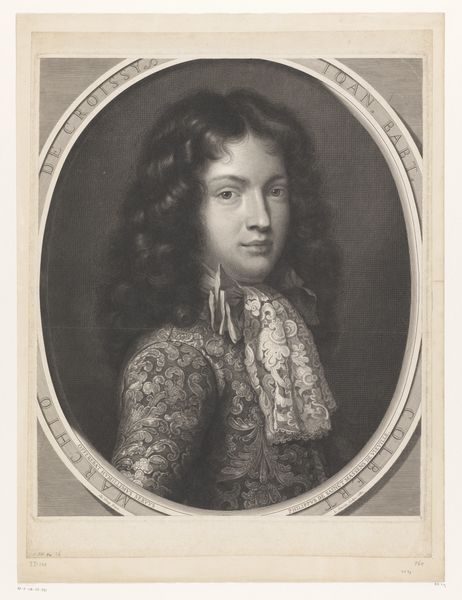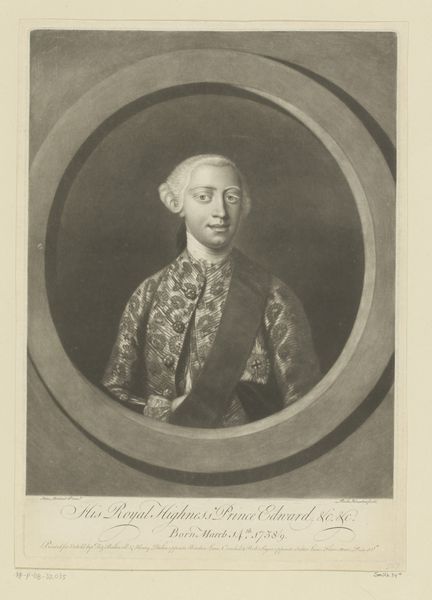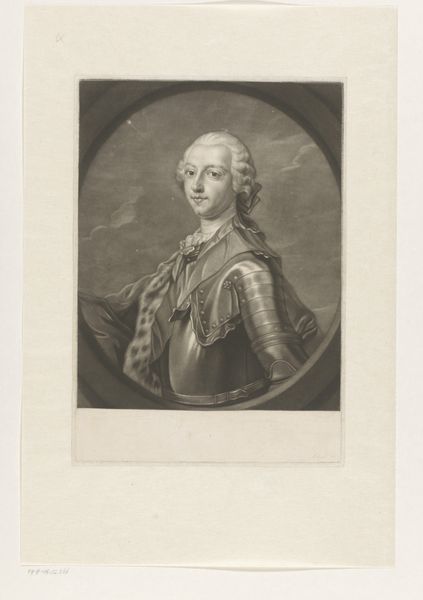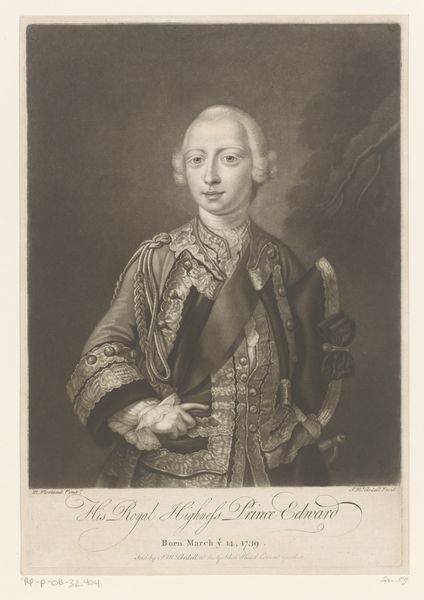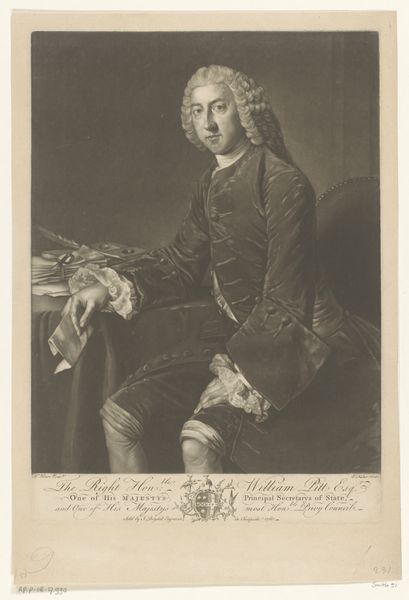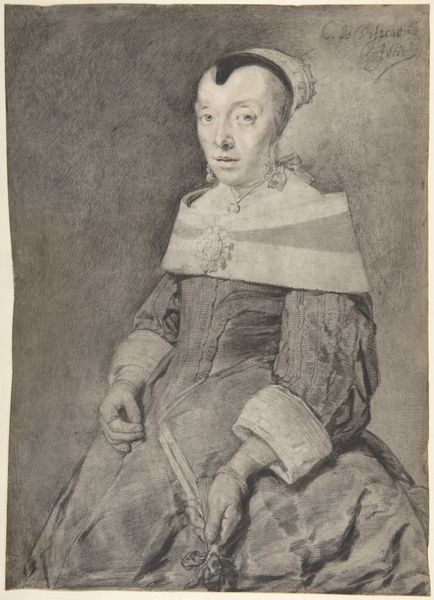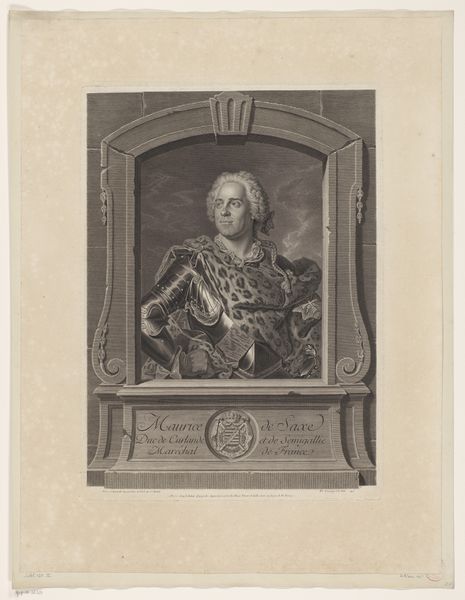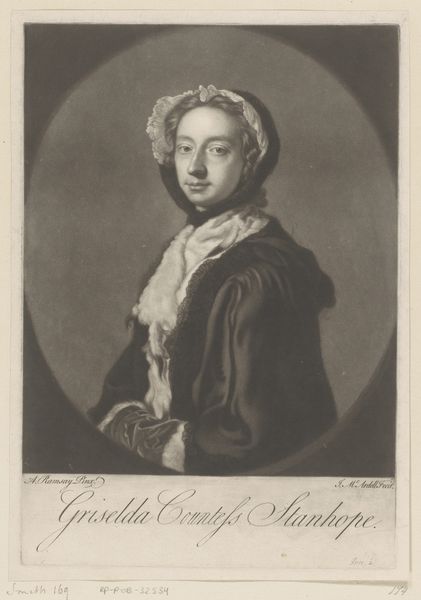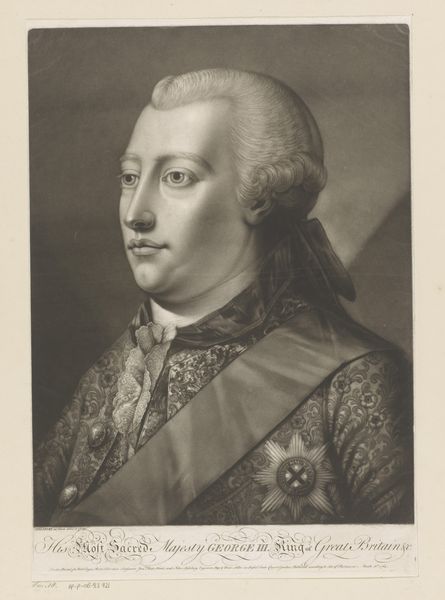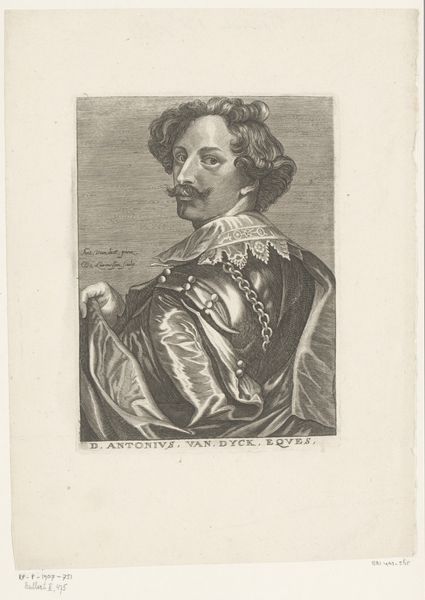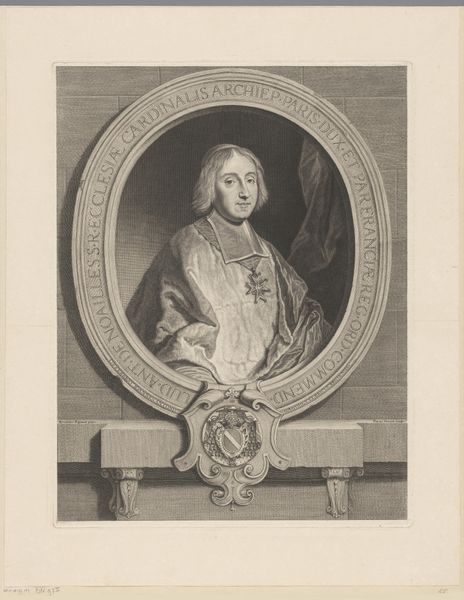
Dimensions: height 326 mm, width 225 mm
Copyright: Rijks Museum: Open Domain
This is James McArdell’s mezzotint portrait of William Wentworth, made sometime before the artist's death in 1765. Mezzotint is an intaglio printmaking process, which relies on the burr of the metal plate to hold ink. It’s a subtractive process: first the entire plate is roughened, then the image is created by selectively burnishing areas smooth, to lighten the tone. This technique is closely associated with the reproduction of paintings, particularly portraits, in the 18th century. It allowed for the relatively easy mass production of images, expanding the market for art significantly, but mezzotint was also valued for its velvety blacks and subtle gradations of tone. Consider the labor involved in creating such a detailed image, and the technical skill required to achieve such a high level of finish. McArdell was a specialist, effectively part of a cottage industry. By understanding these processes, we appreciate how this print functioned within a wider economic and social context, and begin to dissolve the boundary between ‘high art’ and commercial production.
Comments
No comments
Be the first to comment and join the conversation on the ultimate creative platform.
